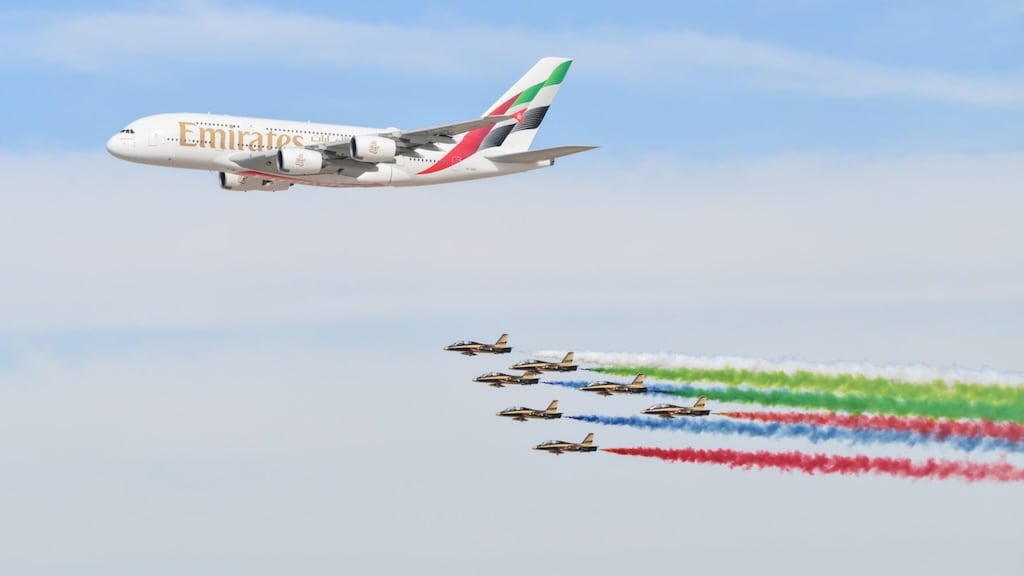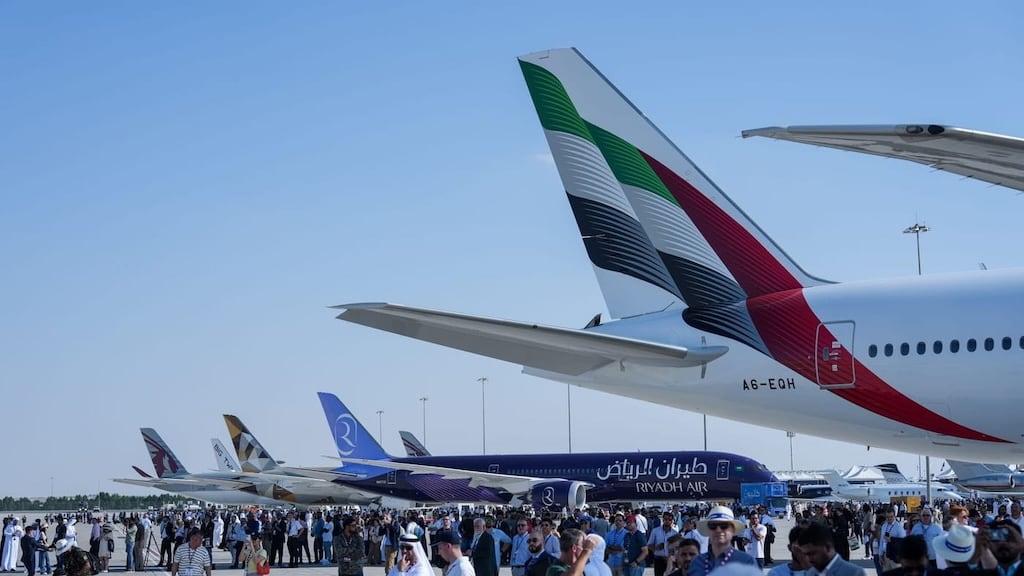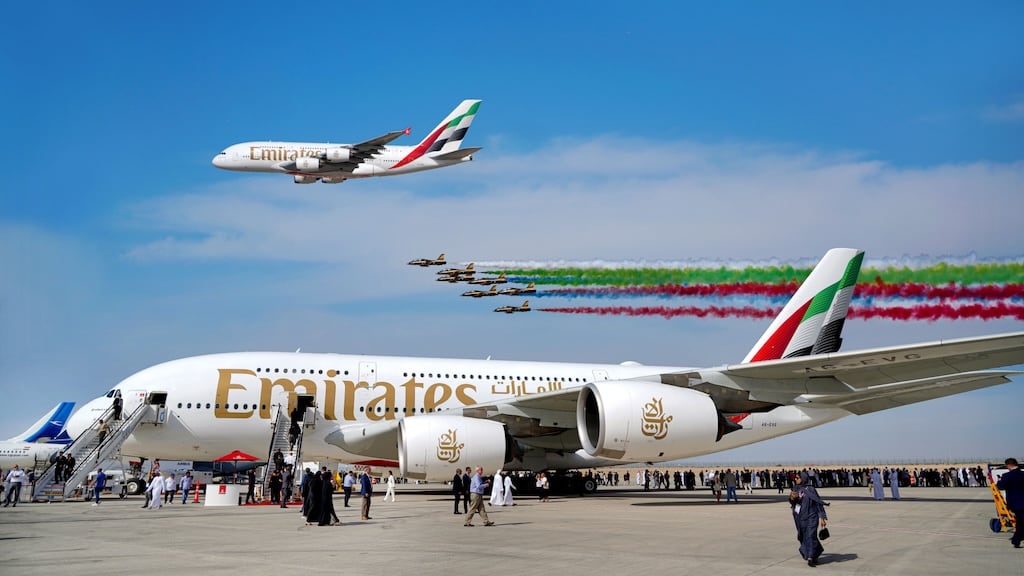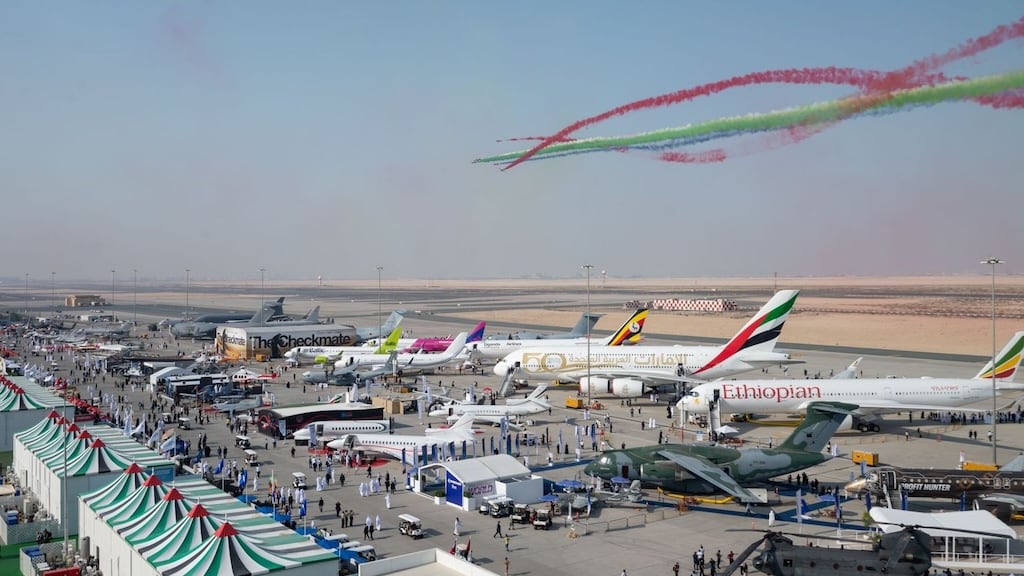Where the Future of Aviation Takes Flight
Every two years, the desert skies over Dubai become the world's most dynamic stage for the future of flight. The Dubai Airshow is far more than a trade event; it is a strategic convergence point where the trajectory of the global aerospace, defense, and space industries is charted, financed, and unveiled. Held under the patronage of His Highness Sheikh Mohammed bin Rashid Al Maktoum, Vice President and Prime Minister of the UAE and Ruler of Dubai, the event is a powerful expression of the nation's ambition. The deep involvement of state entities like Dubai Airports, the Dubai Civil Aviation Authority (DCAA), and the UAE Ministry of Defence underscores its significance as a key instrument of national strategy.
The Dubai Airshow in United Arab Emirates is where multi-billion-dollar deals are signed on aircraft fuselages, where groundbreaking technologies make their debut, and where global leaders gather to define the next era of mobility.


Historical Background
The Dubai Airshow's journey from a modest regional gathering to a global aerospace titan mirrors Dubai's own meteoric rise. Its origins trace back to 1986 with a small civil aviation trade show called Arab Air, held at the Dubai World Trade Centre. The inaugural Dubai Airshow was launched in 1989 at Dubai Airport, featuring 200 exhibitors and 25 aircraft, spurred by growing regional investment in aviation.
The event's evolution has been consistently shaped by geopolitical and economic currents. The 1991 show, rescheduled to November due to the Gulf War, adopted a strong military focus, demonstrating its adaptability. A decade later, the 2001 edition proceeded just six weeks after the September 11th attacks, a defiant showcase of the industry's resilience that closed with a then-record order book of 15.6 billion dollars. That year, the event generated an astonishing $206.1 billion in orders, a figure that shattered all previous records.
This explosive growth is inextricably linked to the ambitious expansion of the Gulf's "super-connector" airlines. The record 2013 figure was driven in large part by a single, monumental $99 billion order from Emirates for the then-newly launched Boeing 777X and additional Airbus A380s. This symbiotic relationship defines the event: the airlines leverage their home turf to make globally significant announcements, and the Airshow, in turn, uses these headline-grabbing deals as a gravitational force, pulling in the entire global aerospace supply chain. The consistent, multi-billion-dollar orders from Emirates, flydubai, and Air Arabia are the economic engine that guarantees the Airshow's indispensable role on the world stage.
Typical Activities
The five-day event is a meticulously orchestrated spectacle of commerce, technology, and aerial prowess. The top activities during Dubai Airshow cater to every facet of the aerospace industry, from high-level executives to engineers and investors. The daily flying displays, typically commencing around 2:00 PM, are a breathtaking highlight. These feature thrilling aerobatic performances from international teams like the Patrouille de France and the UK's Red Arrows, alongside demonstrations of the latest military and commercial aircraft. The star of the aerial ballet is often the UAE's own national aerobatic team, Al Fursan ("The Knights"), whose seven Aermacchi MB-339A jets paint the sky with the red, green, white, and black smoke trails of the nation's flag.
On the ground, the static display is equally impressive, featuring more than 200 of the world's most advanced aircraft. Attendees can get an up-close look at everything from the largest commercial airliners and luxury business jets to next-generation military fighters, unmanned aerial vehicles (UAVs), and the latest electric Vertical Take-Off and Landing (eVTOL) vehicles.
Inside the vast, purpose-built exhibition halls at Dubai World Central (DWC), over 1,500 companies showcase their innovations. Beyond the pavilions of giants like Airbus, Boeing, and Lockheed Martin, the event is evolving into a comprehensive innovation ecosystem. It features dedicated zones like the Space Pavilion, a hub for global space agencies and tech firms, and VISTA, a platform for over 120 aerospace startups to connect with investors. This is complemented by a robust conference schedule with over 350 international speakers across nine tracks, covering critical topics such as sustainable aviation, advanced air mobility, and the future workforce.
Traditional Customs
For international visitors, navigating the business culture is as crucial as navigating the exhibition halls. Understanding the traditional customs in United Arab Emirates is key to building the trust that underpins successful partnerships. The event itself is a professional trade show with an enforced dress code; formal business attire is expected. For men, this means a suit and tie, while women are advised to opt for modest business wear that covers the shoulders and knees.
Business interactions in the UAE are built on a foundation of personal relationships. Initial meetings often begin with extended, informal conversation about family and well-being before turning to business matters. This is not idle chatter; it is a critical part of the due diligence process, where personal rapport and trust are established. Patience is a virtue, as negotiations may proceed at a more deliberate pace than in some Western cultures, and high-pressure sales tactics are generally ineffective.
Greetings are formal and respectful. A light handshake with the right hand is standard between men. A male visitor should wait for a woman to offer her hand before initiating a handshake. Exchanging business cards is an important ritual; present and receive cards with your right hand and take a moment to read the card you are given as a sign of respect. Hospitality is a cornerstone of Emirati culture, and accepting an offer of Arabic coffee and dates is a gracious and expected gesture. For attendees accustomed to a purely transactional business environment, recognizing that time invested in these customs yields a "Relationship ROI" is the first step toward achieving financial success.
What to Expect
Attending the Dubai Airshow requires strategic planning to maximize the experience. The event takes place in November, when Dubai's weather is ideal, with average daily high temperatures ranging from 33°C down to 28°C (91°F to 82°F). The venue, DWC, Dubai Airshow Site, is located in Dubai South, a significant distance from the city's main tourist and business centers. Visitors have several transport options to reach the site, with the most cost-effective being the Metro Red Line to EXPO 2020 Station, followed by a complimentary shuttle bus. Taxis and ride-hailing services offer direct access but can be expensive during peak times.
Accommodation should be booked well in advance, as the city's hotels experience peak demand. For attendees extending their stay, Dubai offers a wealth of attractions, from the iconic Burj Khalifa and The Dubai Mall to the historic Al Fahidi district and thrilling desert safaris. An important insider tip: the Dubai Airshow is strictly a trade event open only to industry professionals and is not open to the general public or individuals under 16. Using the official mobile app is highly recommended for scheduling meetings, navigating the venue, and staying updated on the daily flying program.


Conclusion
The Dubai Airshow is more than a marketplace for aircraft; it is a vision of tomorrow. It serves as a powerful economic engine, a global stage for technological revelation, and a cultural touchstone for the entire aerospace community. The event's evolution into a comprehensive innovation ecosystem—fostering startups, nurturing young talent, and driving conversations on sustainability and space—ensures its continued relevance in a rapidly changing industry.
Attending the Dubai Airshow is to witness the strategic forces—economic, technological, and geopolitical—that are actively shaping the future of human mobility. It is an unparalleled opportunity to connect with the leaders, innovators, and ideas that will define the skies of the 21st century and beyond. To truly understand where the aerospace industry is headed, one must be in Dubai when the future takes flight.